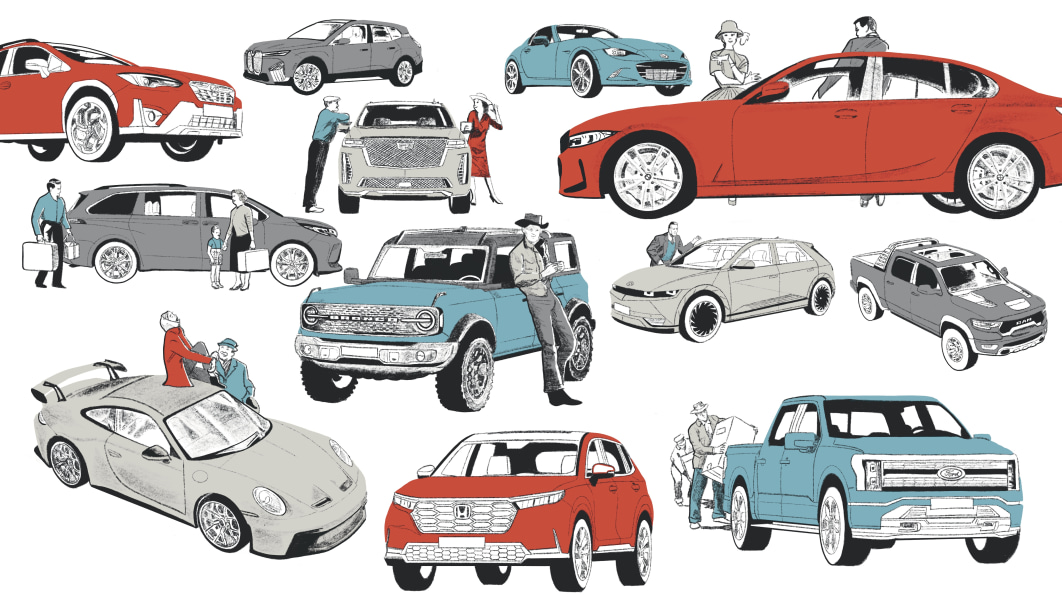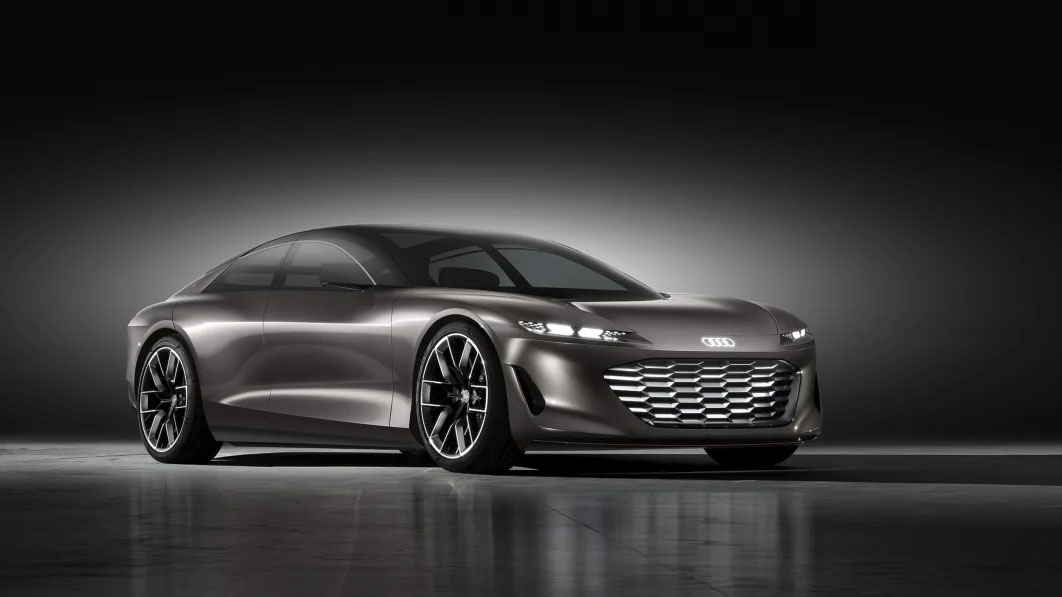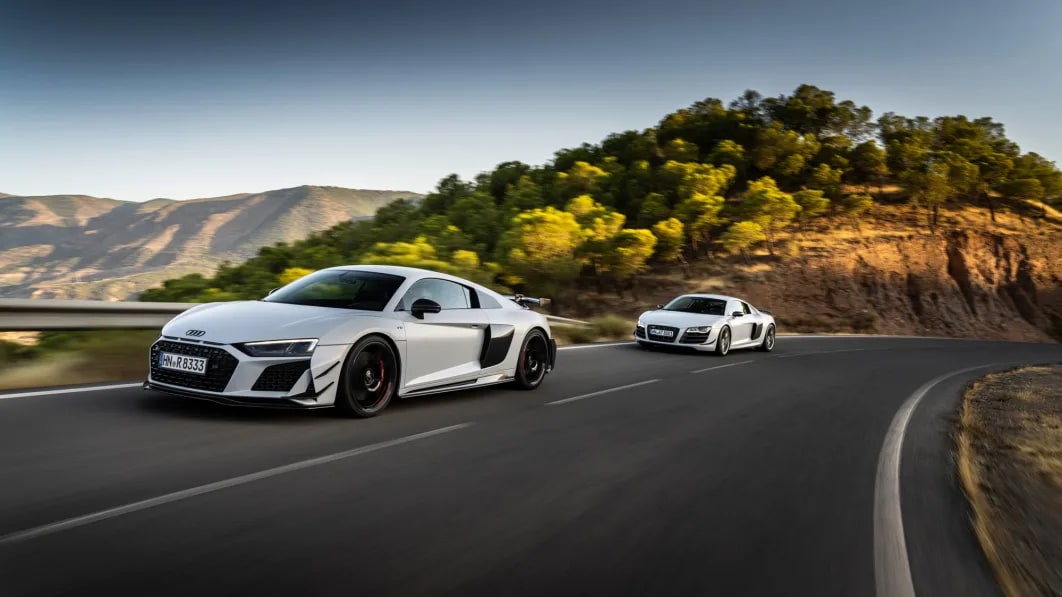There forever has been and, hopefully, will always be an inexplicable level of cool associated with a fast German saloon car. Perhaps it is that they are based cars on which are typically a little beige, boring and, more often than not, diesel barges that trundle down the autobahn minding their own business. Then the skunkworks departments at the likes of M, AMG and RS get to work and the results are snarling hulks that both look and feel like swollen hulks of the timid cars they once were.
Since the turn of the millennium, there have been a couple of personal highlights: the E60 BMW M5 saloon and estate which both featured derivatives of the Williams F1 V10 that howled like nothing else, and the Audi RS6 Avant that also featured a mighty large V10 taken from the Lamborghini Gallardo. The recently replaced Audi RS6 is also up there nestled amongst the best. The pressure is on for the new one to deliver, but the opportunity to drive the RS6 is a few months away. To whet the appetite, Audi asked if I would like to drive the RS7, a car that seems to have been somewhat overshadowed by the mass hankering the market had for the RS6, despite both cars sharing the same mechanicals underpinnings. Could the latest iteration steal the hearts of many as the RS6s of the past had? To find out, I flew to Frankfurt.
Let’s get the numbers bit out of the way: at the heart of the package sits a 4.0-litre V8 engine producing 600 hp and 800 Nm of torque. 100 km/h is dispatched in just 3.6 seconds with a 250 km/h top speed. The Dynamic package removes the limiter, pushing this up to 305 km/h.
A 48-volt system runs a belt alternator starter with car recover 12 kW of power for use between 55 and 160 km/h. The system is meant to provide instantaneous power to the drive while offering the ability to coast on electrical energy with the engine switched off. The cylinder on demand technology further aids fuel consumption. Power is fed to a Quattro permanent all-wheel-drive system through an eight-speed tiptronic transmission. The RS7 gets a launch control function with torque control provided through a sport differential, part of the optional Dynamic and Dynamic plus packages.
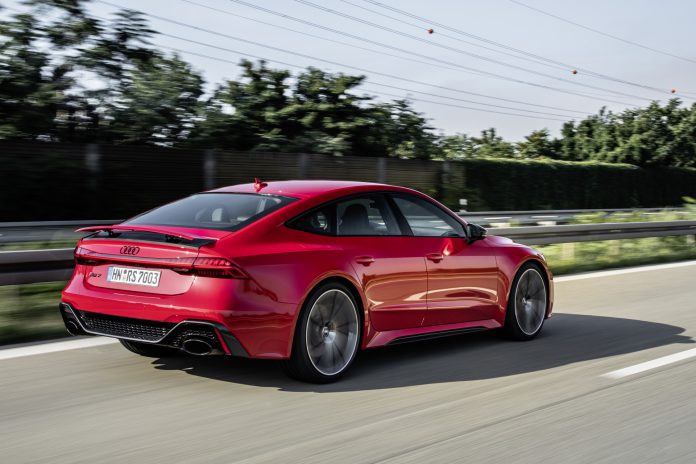
That’s that, what does this all feel like off the paper and on the tarmac? Well, that depends on one decision that owners will have to make, it makes a rather considerable difference: suspension. The RS7 can be optioned with either the standard, more comfortable, RS adaptive air suspension or an optional sport suspension with Dynamic Ride Control, that is the one you want. Why? The optional DRC set up is harder and, yes, it is touch harsher on the road. Make no mistake, it is still comfortable when you’re cruising, but when you get a hustle on, the body control and the limit before understeer and tyre squeal become a factor, is far higher.
I am no track day magician, but I was finding the handling limits of the car in the air suspension fitted cars remarkably easily. The conventionally sprung car felt far more up for a good time, and as a result, I feel it is worth the comfort trade-off. All cars tested rode on massive 22 inch wheels all around.
What about the performance? My first thoughts on the autobahn were ‘oh, it’s not THAT quick’, I then looked down and noticed I had hit the top speed. In gear acceleration in first, second and third in particular, is astonishing. It feels every bit 592bhp quick. At speed, the sensation of power is somewhat stymied by the lack of a certain characteristic: sound. There is a huge 4.0-litre V8 under the hood, but you would have no idea judging by the sound in the cabin. It is a little depressing, but it is a sign of the times in a world muzzled by the legislative necessity for the awful OPF. Audi combated my comment stating that they wanted to keep the noise authentic and refused to pipe fake sounds into the cabin…if you listen carefully you can hear BMW M retreating into the bushes.
Back to the bends, there is a lack of something here too, steering weight and feedback. This is a gripe that I’ve had with Audis for years, the chances of this being remedied in the RS7 were slim, it is a little difficult to understand what the front tires are doing and where the limits of adhesion are when there is such an absence of palpable communication coming through the wheel. That being said, there is good news too. The car is savagely fast out of bends and the 48 volt antiroll system masks the weight as well as you could ask from a car that weighs in at 2,500 kilos. As previously mentioned, the DRC suspension is where the car is at its best. It must also be noted that the gearbox is fine on the way up, but hesitates on downshift – third to second, in particular, seems to take an age.
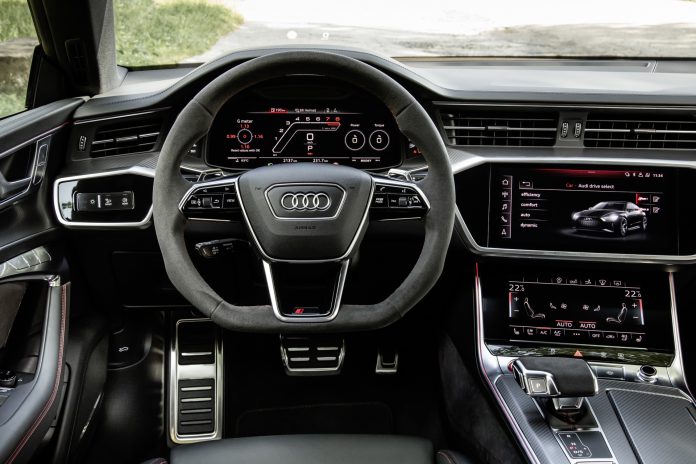
Inside there are a few niggles, but on the whole, the interior is a very pleasant place to be. There are lashings of leather, alcantara and plenty of room in the front and rear. There are also walls of screen. The dash is impressive and there and a multitude of configuration options to display as much data as I’ve seen in a machine this side of an F16. For me, the two stacked central touch screens are a little fiddly on the move and require more concentration than I would like to give them when pushing on or trying to focus on a twisty stretch of tarmac. This, I guess, is personal preference and others may love them as much as I loathe them. On the whole, I feel there could be more going on in the interior to set the RS apart from the series A7 to reflect the changes to the exterior. It lacks a special touch.
On the whole, the RS7 is a mighty fine piece of kit. If you’re in the market for an M5 to E63, the RS7 really is a viable alternative. It is a little softer and quieter than the aforementioned cars, but is by no means slower. It features all the tech you could ever need, is spacious and in plenty fast. Audi claim 0-100 in 3.6, I saw 3.2 time and time again with the deeply effective launch control activated. To answer my opening question, yes, I really think this car deserves adoring fans as there is plenty to love in this new RS7 as there has been in every RS6 to date. Now we need to see just how impressive the new RS6 is.

